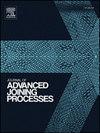Ti and TiAlV foils enhanced with PLD and flash-deposited carbon: On cytocompatibility and antibacterial activity
IF 4
Q2 MATERIALS SCIENCE, MULTIDISCIPLINARY
引用次数: 0
Abstract
In this study, we investigated the effects of carbon layer deposition on titanium (Ti) and titanium alloy (TiAlV) substrates using "flash" vaporization and pulsed laser deposition (PLD) techniques. Raman spectroscopy revealed that the PLD method produced a higher sp3 carbon bond content than the evaporation method (61 vs. 47 %). Atomic force microscopy and surface wettability analyzes showed differences in surface roughness and contact angle, with PLD-deposited samples exhibiting enhanced hydrophilicity and wrinkled morphology. Subsequent laser annealing optimized surface properties by increasing hydrophobicity, which is critical for cell adhesion. Surface chemistry analysis via scanning electron microscopy and energy dispersive spectroscopy demonstrated significant carbon enrichment in the PLD-deposited samples, mainly for TiAlV substrate. Cytocompatibility tests using human osteosarcoma cells (U-2 OS) revealed varying cell adhesion and proliferation based on surface modification, with PLD-deposited layers promoting better cell interaction. Both carbon deposition techniques enhanced antibacterial effect. This suggests the potential of PLD-deposited carbon layers for biomedical applications, particularly in enhancing implant surfaces for improved cell growth and adhesion, and reduce bacteria, the nanostructured substrates may serve also for subsequent replication process into polymer.
PLD和闪蒸碳增强Ti和TiAlV薄膜的细胞相容性和抗菌活性
在这项研究中,我们研究了碳层沉积对钛(Ti)和钛合金(TiAlV)衬底的影响,采用“闪光”汽化和脉冲激光沉积(PLD)技术。拉曼光谱显示,PLD法比蒸发法产生更高的sp3碳键含量(61比47%)。原子力显微镜和表面润湿性分析显示了表面粗糙度和接触角的差异,pld沉积的样品表现出增强的亲水性和褶皱形态。随后的激光退火通过增加疏水性来优化表面性能,这对细胞粘附至关重要。通过扫描电镜和能量色散光谱分析表明,pld沉积样品中碳富集显著,主要是TiAlV衬底。使用人骨肉瘤细胞(U-2 OS)进行的细胞相容性测试显示,基于表面修饰的不同细胞粘附和增殖,pld沉积层促进了更好的细胞相互作用。两种碳沉积技术都增强了抗菌效果。这表明pld沉积的碳层在生物医学应用方面的潜力,特别是在增强植入物表面以改善细胞生长和粘附,减少细菌方面,纳米结构的底物也可以用于随后的聚合物复制过程。
本文章由计算机程序翻译,如有差异,请以英文原文为准。
求助全文
约1分钟内获得全文
求助全文

 求助内容:
求助内容: 应助结果提醒方式:
应助结果提醒方式:


